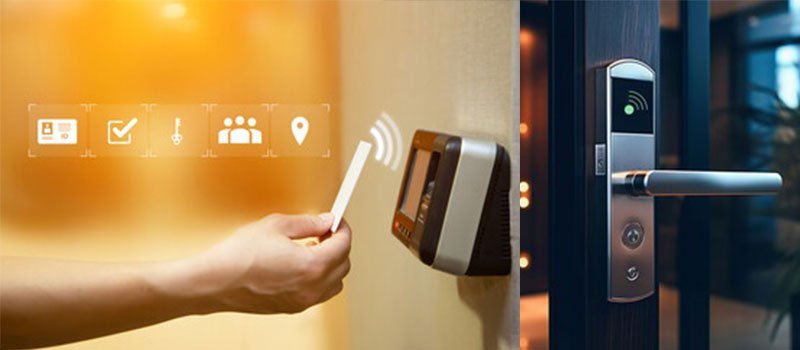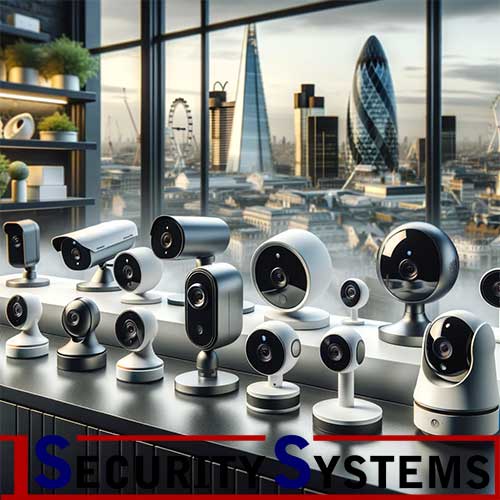Types of Access Control Systems in the UK
The importance of effective security measures in residential, commercial, and public spaces cannot be understated. Access control systems, in particular, have evolved into sophisticated tools to manage and monitor people’s ingress and egress, ensuring only authorised personnel gain entry. The UK market boasts a broad spectrum of these systems to cater to various requirements. This article explores the diverse range of access control systems available in the UK.
- Traditional Lock and Key
The most basic form of access control, the conventional lock and key method, is still widely used in many establishments. While effective for simple security requirements, they do pose challenges, such as the risk of keys being duplicated or lost.
- Keypad/PIN Systems
A step up from traditional locks, keypad systems require users to input a numerical code or PIN to gain entry. These systems offer the advantage of not having to carry physical keys. However, there’s a potential risk if the PIN gets shared or becomes known to unauthorized individuals.
- Proximity Card and Readers
Commonly found in offices and apartment buildings, proximity systems involve users presenting a card or fob to a reader. Once the card is verified, access is granted. The security level can be enhanced by frequently updating access permissions and deactivating lost cards.
- Biometric Systems
Using unique physiological attributes, biometric systems offer high-security access control. Fingerprints, facial recognition, and iris scans are popular biometric methods. Due to the uniqueness of biometric data, these systems provide superior security, making them prevalent in high-security areas and modern corporate settings.
- Smartphone-Based Access
Riding the wave of digital transformation, many systems in the UK now use smartphones as access tools. Through apps and Bluetooth or NFC technologies, doors can be unlocked without any physical keys or cards. These systems are highly scalable and can be monitored remotely, making them a favourite for modern businesses and homes.
- Magnetic Stripe Cards
Similar to credit or debit cards, magnetic stripe cards store user information on a magnetic strip. When swiped through a reader, if the data matches, access is granted. Though less prevalent today due to newer technologies, they still find use in certain establishments.
- Networked Access Control Systems
These systems are connected to a central network, allowing administrators to monitor and manage multiple access points simultaneously. Suitable for large organisations or premises, networked systems can track personnel movement, time of access, and provide comprehensive security reports.
- Stand-Alone Access Control
Ideal for smaller establishments or areas requiring limited access, stand-alone systems operate independently. Each access point has its own control system, not linked to a central network. This makes them relatively easier and cheaper to install.
- Token-based Systems
In these systems, users are given a token (like a coin) that they insert into a slot to gain access. While somewhat old-fashioned, they are still effective for places like public restrooms or certain car parks where one-time access is needed.
- Infrared and Radio-Frequency Systems
Utilising IR (Infrared) or RF (Radio Frequency) signals, these access control systems are touchless, allowing for smooth passage, especially for vehicle access points. The user often has a transmitter that sends a signal to a receiver at the access point.
Conclusion:
The evolving security needs and technological advancements have led to a diversified range of access control systems in the UK. From traditional locks to state-of-the-art biometric systems, the choices are vast. The selection often depends on the level of security required, budget, and the scalability needed for future growth.
When implementing an access control system, consider factors like ease of use, potential vulnerabilities, and the need for ongoing maintenance. Collaborating with a professional security provider can guide decision-makers in choosing an optimal solution tailored to their requirements.
As we move into an increasingly digital era, it’s evident that access control will continue to be a pivotal element in the security strategies of homes, businesses, and public institutions across the UK.
CALL US: 020 3479 4007
Talk directly with the installer and get your service fully completed within a day!





